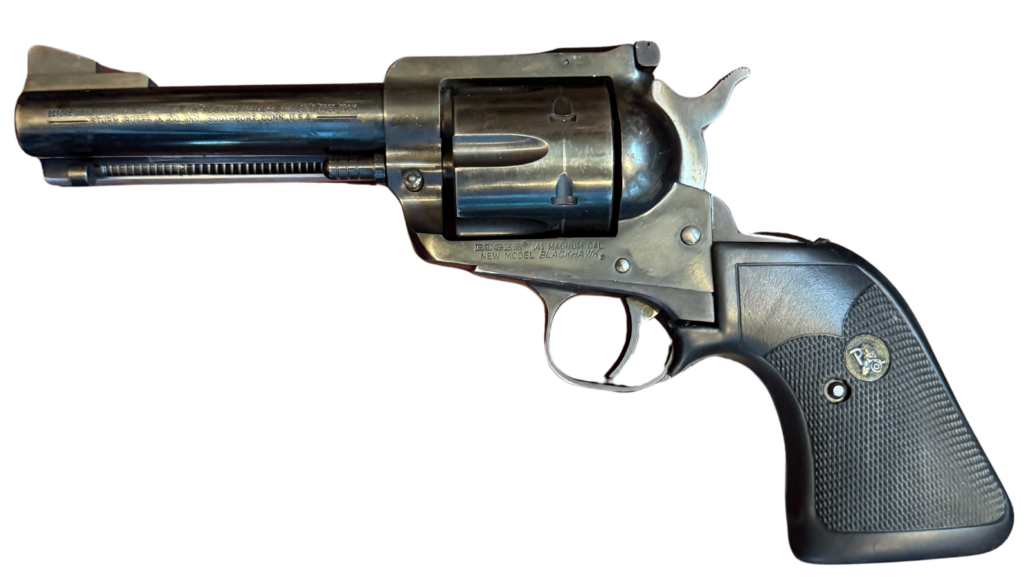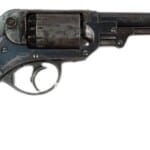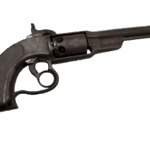
Introduction to the Colt Third Model Dragoon
The Colt Third Model Dragoon is one of the most iconic percussion revolvers of the mid-19th century. A symbol of rugged frontier firepower, it played a significant role in shaping American military and civilian handgun use during the 1850s. Designed as an improvement over its predecessors, the Third Model Dragoon was a robust, high-powered revolver that found favor with cavalry units, lawmen, and settlers alike.
This comprehensive examination will cover the development, design, manufacturing history, performance, and historical impact of the Colt Third Model Dragoon, shedding light on its legacy as one of the most formidable sidearms of its time.
The Evolution of the Dragoon Series: From Paterson to Third Model
To fully appreciate the Colt Third Model Dragoon, it is necessary to understand its origins. The Dragoon series evolved as a response to the shortcomings of earlier Colt revolvers, particularly in combat conditions.
The Colt Paterson (1836-1842)
The story begins with Samuel Colt’s first revolver design, the Colt Paterson. Patented in 1836, the Paterson revolver was a lightweight, innovative firearm, featuring a revolving cylinder and folding trigger. However, it suffered from reliability issues due to its fragile frame and relatively weak firepower (.36 caliber). It was deemed inadequate for military use, leading to limited adoption. Eventually, the Patent Arms Manufacturing Company went bankrupt in 1842, temporarily halting Colt’s firearm business.
The Colt Walker (1847)
Colt’s fortunes changed when Captain Samuel H. Walker of the Texas Rangers collaborated with him to design a more powerful revolver for military use. The result was the Colt Walker Model 1847, a massive .44 caliber revolver capable of holding 60 grains of black powder—a significant increase in firepower. While it was an effective weapon, the Walker suffered from structural weaknesses, particularly in its cylinder, which was prone to rupturing due to high powder loads.
The First and Second Model Dragoons (1848-1850)
To address the Walker’s durability issues, Colt introduced the First Model Dragoon in 1848, refining the design with a shorter barrel (7.5 inches vs. the Walker’s 9 inches), thicker cylinder walls, and a more robust frame. The First Model still had flaws, leading to further modifications in the Second Model Dragoon (1849), which introduced a better loading lever latch and refined frame geometry.
The Colt Third Model Dragoon: Design and Features
By 1851, Colt had perfected the Dragoon revolver with the Third Model, making several significant improvements that enhanced its reliability and handling. The Third Model Dragoon remained in production until 1860, with around 10,500 units produced.
Key Features of the Third Model Dragoon
- Round Trigger Guard – One of the most noticeable changes was the transition from the square-back trigger guard (seen on the First and Second Models) to a rounded brass trigger guard, which provided better ergonomics.
- Strengthened Loading Lever Latch – The bayonet-style loading lever catch was an upgrade over earlier designs, which were prone to dropping under recoil.
- Cylinder Engraving – Many Third Model Dragoons featured a cylinder scene depicting the battle between the Texas Rangers and Comanches, a signature feature of Colt revolvers from this era.
- Grip Refinements – Some versions had slightly altered grip profiles, improving comfort and control.
- Same .44 Caliber Power – Like its predecessors, the Third Model Dragoon retained the .44 caliber chambering and black powder operation.
Ballistics and Performance
The Colt Third Model Dragoon was among the most powerful handguns of its era. It fired .44 caliber lead balls or conical bullets, propelled by black powder loads ranging from 40 to 50 grains. This produced a muzzle velocity of 900–1,000 feet per second (fps), making it a formidable sidearm with stopping power comparable to many long guns of the time.
Weight and Handling
Weighing approximately 4.2 pounds unloaded, the Dragoon was a heavy revolver, best suited for cavalry rather than belt carry. Its robust frame allowed it to handle high-pressure loads, but its weight and size meant it was more practical for horse-mounted soldiers than for everyday civilian carry.
Military and Civilian Use
Military Adoption
The Colt Third Model Dragoon was widely issued to U.S. Cavalry units, making it a staple sidearm for mounted troops in the 1850s. Although it arrived too late for the Mexican-American War (1846-1848), it saw extensive use in frontier conflicts and Indian Wars.
Civilian Market
Due to its reliability and power, the Third Model Dragoon was popular among frontiersmen, settlers, and lawmen in the American West. Many were privately purchased by individuals needing a dependable firearm for protection against bandits, hostile forces, and wildlife.
Comparison to Other Contemporary Revolvers
The Colt Third Model Dragoon was not the only large revolver of its time. Several competitors and successors are worth comparing:
Colt Walker vs. Colt Third Model Dragoon
- Walker: Larger, heavier (4.5 lbs), with a longer 9-inch barrel.
- Dragoon: More refined, slightly lighter (4.2 lbs), with a better loading lever system and stronger frame.
Colt Dragoon vs. Adams Revolver (1851)
- The British Adams revolver was a double-action design, allowing for faster firing without manually cocking the hammer.
- The Dragoon, though single-action, was more powerful due to its .44 caliber vs. the .442 caliber of the Adams.
Colt Dragoon vs. Colt Model 1860 Army
- The 1860 Army Revolver was lighter (2.5 lbs) and more advanced, using a rebated cylinder and a streamlined grip.
- The Dragoon remained preferred by those seeking maximum firepower over lightweight convenience.
Production and Variants
The Colt Third Model Dragoon had several special editions and variations, including:
- Military and Civilian Models – Some models were made specifically for military contracts, while others were sold on the civilian market.
- Engraved Versions – Highly ornate, engraved Dragoons with custom grips and silver-plated finishes were produced for wealthy buyers and military officers.
- Fluted Cylinder Models – Some late production models featured fluted cylinders, an uncommon but distinctive variant.
Legacy and Collectibility
The Colt Third Model Dragoon remains one of the most sought-after antique revolvers for collectors. With only 10,500 units produced, surviving examples in good condition command high prices at auctions. Original Dragoons with historical provenance, especially those linked to military or frontier use, are particularly valuable.
Today, replica Third Model Dragoons are produced by manufacturers such as Uberti and Pietta, allowing modern shooters to experience the power of this classic revolver without risking an original artifact.
Conclusion
The Colt Third Model Dragoon was the pinnacle of Samuel Colt’s early revolver designs, refining the Walker and earlier Dragoon models into a more balanced, reliable firearm. As a powerful .44 caliber black powder revolver, it served cavalry units, lawmen, and settlers, becoming a symbol of the rugged frontier spirit.
While it was eventually succeeded by the lighter Colt 1860 Army, the Dragoon remains a landmark in firearm history. Its blend of firepower, craftsmanship, and historical significance ensures its place as one of the most revered percussion revolvers ever made.
Whether as a collector’s item, historical artifact, or black powder shooter’s dream, the Colt Third Model Dragoon continues to captivate firearms enthusiasts around the world.
Discussions on the Dragoon and other Colt percussion revolvers can be found here.
If you know of any forums or sites that should be referenced on this listing, please let us know here.



